Listening for Bowhead Whales
ABOARD THE USCGC HEALY, ON THE BEAUFORT SEA– Now that we are aboard the HEALY and settled in, while we slept a survey was done running roughly offshore of Barrow. The principal work along this leg was mapping of the seafloor bathymetry with the ship’s multibeam acoustic system, which records echos of sound emitted from the ship and reflected by the seafloor. The return time of the echo, once corrected for water column temperature and salinity, provides depth along the ship’s track. In addition, a series of CTD casts (described in Kevin’s last dispatch) was made to measure water column properties, with additional sensors for measuring fluorescence of chlorophyll in the water column, an indication of the abundance of phytoplankton, the single celled plant life which floats in the oceans, and is an indication of the productivity of the ocean.
The principal work of the first evening included the project of Kate Stafford from the University of Washington, who is retrieving and redeploying moorings placed on the seafloor which are equipped with hydrophones to listen for the sounds of various marine mammals, including seals, walrus, and beluga whales, but with particular emphasis on recording the sounds of bowhead whales (Balaena mysticetus), the sounds of which can be heard at: http://www.dosits.org/gallery/marinemm/15.htm.
The bowhead whales are one of the key marine species in the ecosystem, and important for traditional Inuit culture — their meat and blubber a source of food, and their bones used as sled runners and in house construction. Their baleen (the horny plates in their mouths with which they filter the small shrimp-like euphausiids and copepods — their main food), as shown in the baleen model boat in Day One’s blog, was put to many traditional uses in Inuit culture: as a tough cordage for seal and fish nets; for short lanyards and lashings on sleds; as the tip of dogsled whips; for hunting snares for birds and rabbits; bent into boxes for keeping harpoon heads; made into traditional Inuit snow goggles to prevent snow blindness from glare off snow and ice; as a brow on hats for kayakers to keep spray out of their eyes; as fletching on spears and arrows instead of feathers; and as large knives for cutting ice for igloos, and smaller story knives used to tell stories by ‘drawing’ in snow or dirt. Baleen was also woven together without being cut to form racks hung from the ceiling for general storage, and as floorboards in the traditional semi-subterranean Inuit houses shown in the Day One blogs: a sort of Inuit linoleum! And, in earlier times when warfare between native groups existed, it was also used as plates woven together in the construction of armor. Making of woven baleen baskets was an innovation of the late nineteenth century begun by Barrow resident Charlie Brower.
The bowhead whale is still the principal whale hunted off Barrow. Getting an accurate count of bowhead whales has been a key issue for scientists and the Inuit people for many decades to ensure their proper management and conservation. Preliminary information on the results of the annual aerial survey, along pictures of bowhead whales may be found at: http://www.afsc.noaa.gov/nmml/cetacean/bwasp/index.php. Kate’s hydrophone arrays are deployed offshore of the 100 meter depth line at two locations along the coast in groups of three to allow tracking of whales passing along the coast. Their batteries allow them to operate for a year. In the first day of science, the arrays already deployed from the previous year are retrieved by positioning the ship over their location and generating a specific series of tones which activates an acoustic release. Floats which had remained submerged with the hydrophones are then released from their bottom weights, and the hydrophone and floats drift up to the surface where they are located by a small boat, and passed off to the ship, which then hoists them back onto the deck.
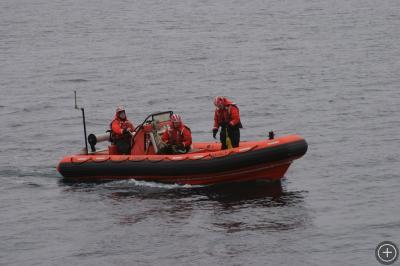
Coast Guard small boat used to retrieve moorings by snagging their floats after release from seafloor.
Once the hydrophones are retrieved, Kate downloads the data from the past year collected by the hydrophones, changes out the batteries and data recording computer hard drives, and later in the cruise will redeploy them. Of concern when retrieving the hydrophones is the ability to find them if there is heavy ice. High resolution (100 meter) satellite images have been requested by the ship showing where the ice is located.

100 meter resolution Radarsat satellite image showing ice concentrations in Beaufort Sea off Barrow, Alaska.
This imagery is from a Radarsat satellite, which is particularly useful as it can see through the ubiquitous fog. In areas where ice concentrations are heavy, hydrophone retrieval can be delayed until the ice has moved away, and the likelihood of retrieving the moorings is more certain: better to wait a bit for conditions to improve than risk a full year’s data.
The principal components of hydrophone mooring array, shown in the photo below being disconnected from the cable by Kate Stafford of the University of Washington and John Kemp of the Woods Hole Oceanographic Institution, are the hydrophone and acoustic release. When the mooring array is redeployed, a float is put over the side first. It is the float which provides the lift to allow the hydrophone and acoustic release to surface, be located by a small boat and retrieved. After the float goes over the side, the hydrophone, and then acoustic release go over, and last of all the weight for the mooring anchor is put over the side. When everything is in the water, the ship is positioned precisely over the desired mooring location, and a manual release is used which, when a rope attached to it is pulled, drops the weight at the correct location, and the entire array is pulled downward to the bottom, where it remains until the ship returns to ‘ping’ the acoustic release with the precise acoustic series of tones to retrieve it a year hence.
Bowheads were among the whales fairly heavily hunted during the golden days of whaling in the second half of the nineteenth century. Bowhead populations in advance of this period have been cited as about 16,000 animals, although of course, it is impossible to know for certain their historical abundance. The current estimate of the Beaufort-Chukchi-Bering Sea bowhead population is about 8,000-10,000 animals. The numbers of these whales seems to be stable and actually increasing. It is important to get good data on their numbers and habitat use as changes occur in sea ice and ship traffic in the Beaufort and Chukchi Seas.
Each year the bowhead whales migrate south through the Bering Strait in the winter to avoid seas completely covered with heavy ice, so that they can continue to surface and breathe. In the spring they migrate north from the ice edge in the Bering Sea into and through the Chukchi Sea, and many migrate north around Barrow and then east along the coast toward the Canadian arctic and Northwest Passage channels. Maps of the migration routes of some whales tagged by Alaska Fish and Game Department personnel can be seen at http://www.wildlife.alaska.gov/index.cfm?adfg=marinemammals.maps&name=8-10.jpg. As winter arrives, the whales return south along the coast to the Bering Sea.
Interestingly, the bowhead whales are often accompanied north by beluga whales (Delphinapterus leucas), the truly “white whales” of the northern seas. Because of their much smaller size, the belugas cannot easily break through the ice to make breathing holes themselves, and follow the bowhead whales using them as their own ‘icebreaking vessels’ to access more northerly waters in spring. Once in the Beaufort Sea the bowhead whales appear to distinctly prefer the waters closer to shore along the Alaskan North Slope, while aircraft sightings and tagged animals show that belugas remain further offshore in deeper waters, with a fairly distinct separation of habitat use. The fact that bowheads prefer the more nearshore waters along the North Slope makes them potentially more susceptible to increased human activities, and Kate’s project all the more important to contribute to continued monitoring of population levels.
Hunting whales by certain arctic peoples is much more than simply an avocation or way of harvesting food. This is perhaps difficult for outsiders to fully comprehend, but whaling in traditional Inuit and other arctic whaling cultures was, and still is, almost a religious or deeply spiritual enterprise, surrounded with rituals of moral purification and behavioral restrictions. It is still emphatically pointed out that one does not actually hunt whales, but one simply goes hunting for whales: it is the whale that gives itself to the hunter and whaling crew which has strictly maintained the traditions associated with successful whaling. In the arctic this invariably includes, among many other things, widespread distribution of the animals taken to everyone in the community, and other communities as well, practices which are still sustained. George Naekok, who is with us as an Inuit observer on this cruise, has been whaling most of his life.



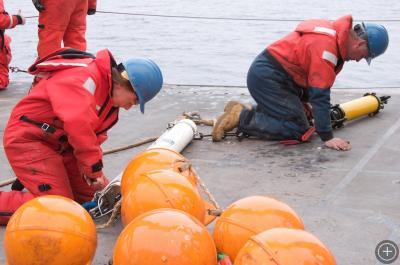
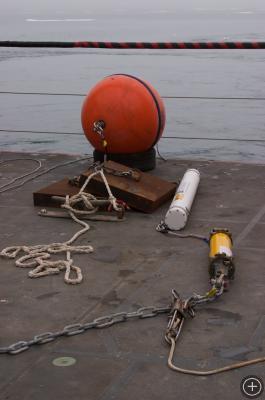
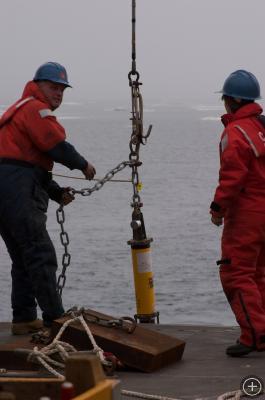

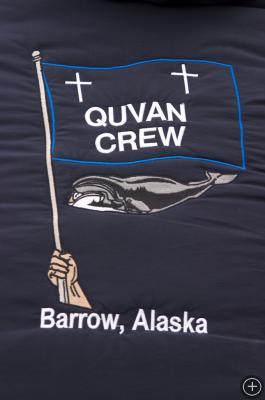



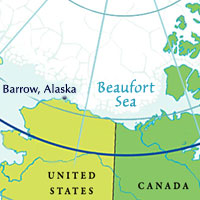





Great writing Phil ! We had a sloppy wet sponge over us last week. 6 ” in 4 days. I think it’s over. I’ll be reading your blog. Lee
I enjoyed Your story. But was looking for something on the buoys.
Everyone here is fascinated with your work and looks forward to hearing more from your adventures.
Phil-
Thanks for the insight as to what is going on in Beaufort. You are thought of often.
Your work is inspiring keep on going! My prayers are with you.